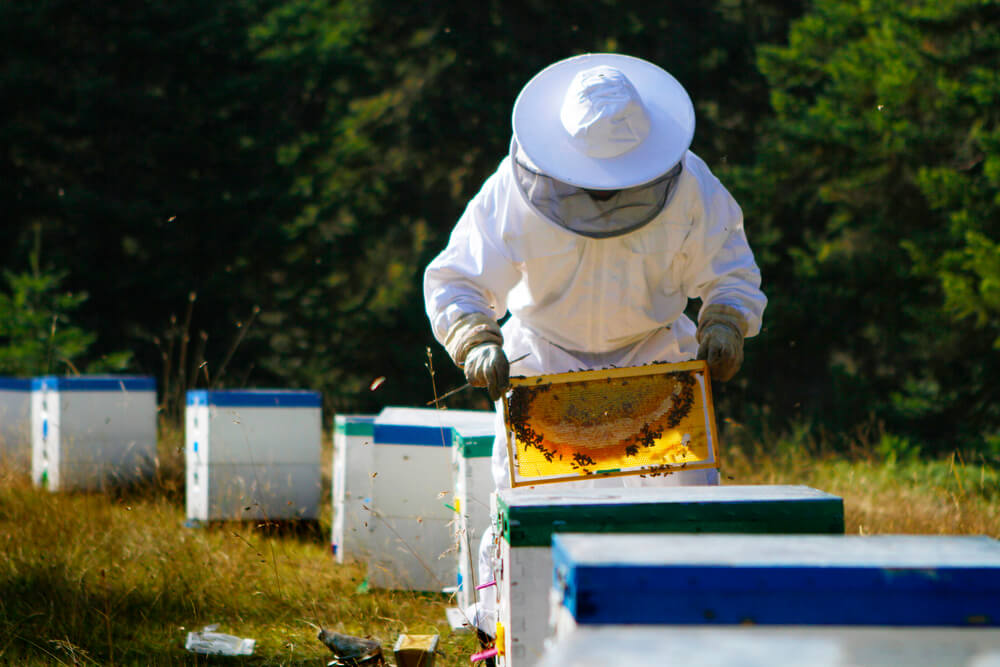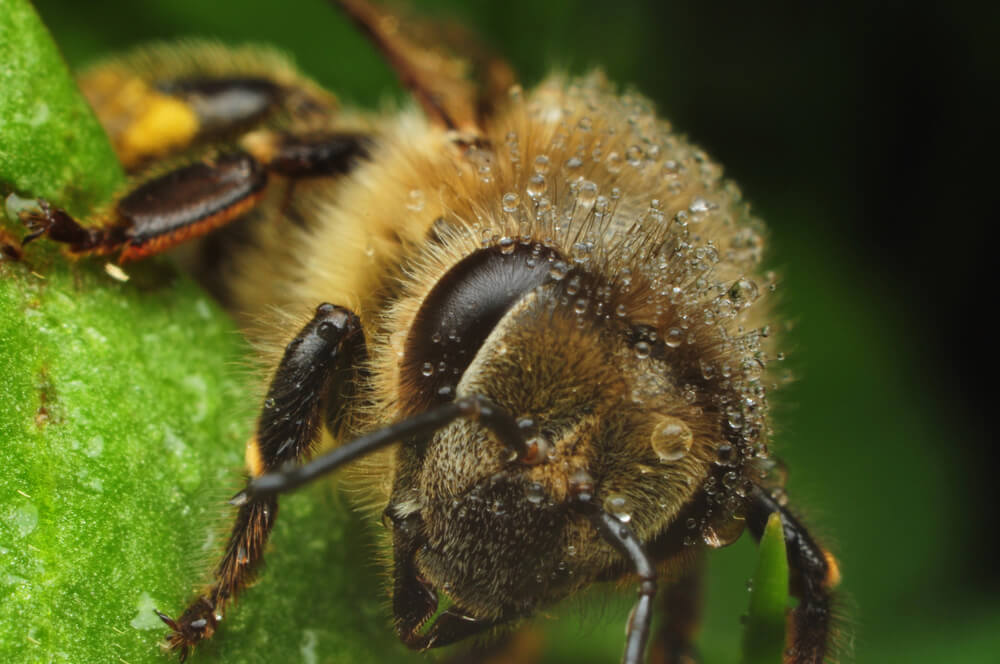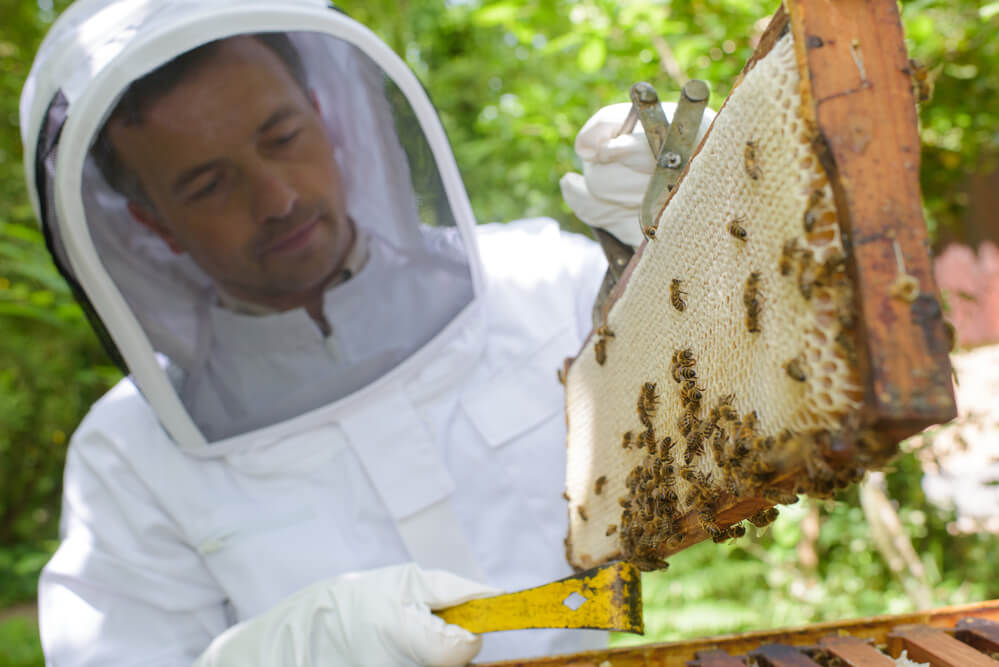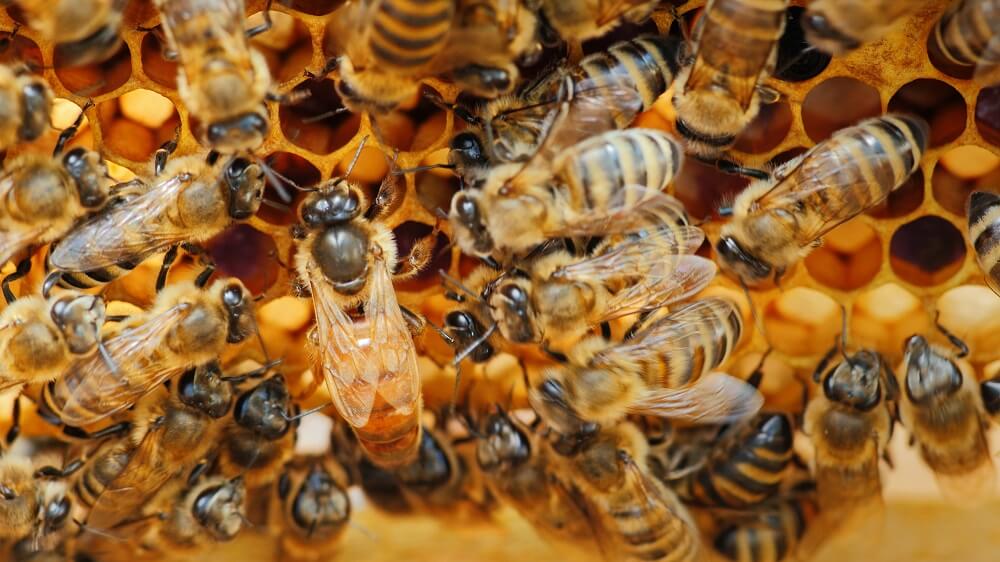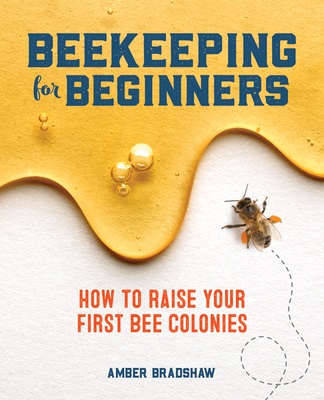Table of Contents:
What is a Beekeeper Called?

A beekeeper is also known as an “apiarist.”
Apiarists are people who care for and raise honeybees. The honeybees live inside beehives which are located in the beekeeper’s “apiary.”
Beehives are man-made structures where the honeybees live, raise their young, and produce honey.
And here’s the thing:
Most beekeepers raise honeybees just for a hobby, only having between one and five beehives.
That said, a single honeybee hive can contain up to 60,000 honeybees. So a beekeeper with five hives may have up to 300,000 honeybees in their apiary.
This brings us to our next question…
What Do Beekeepers Do?
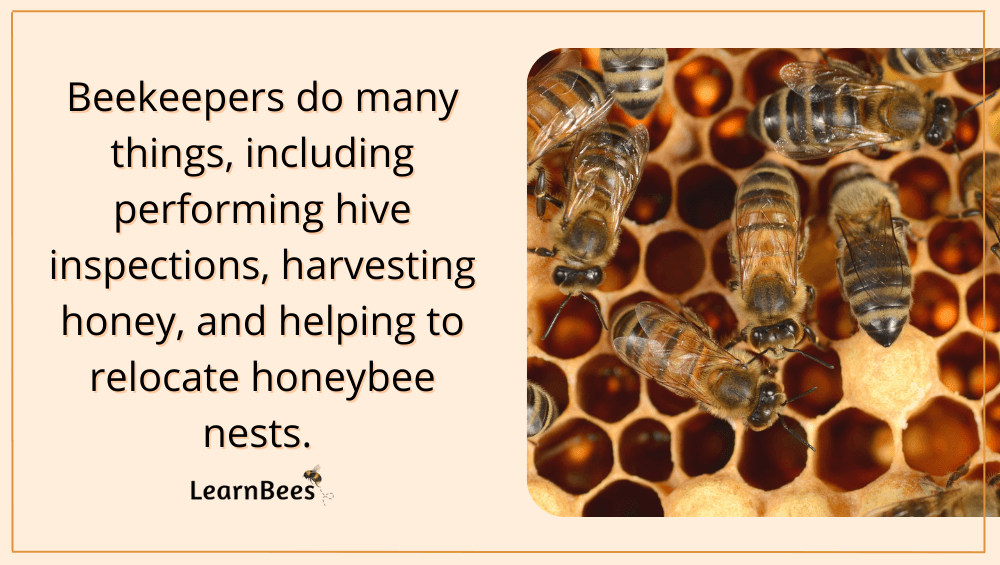
Most beekeepers do beekeeping for fun. They find the lifestyle of honeybees fascinating, and they enjoy some of the perks of beekeeping, such as collecting honey and beeswax.
But what all does beekeeping entail?
Several things:
1) Beekeepers watch over the honeybees
Beekeepers provide honeybees with several things, including:
- Beehives to live in
- Medications to protect against certain diseases and infections
- New queen honeybees for replacement
But it’s important to mention:
Honeybees do perfectly fine in the wild. In other words, honeybees don’t need beekeepers to survive and thrive.
In fact, research shows that beekeepers may unknowingly spread diseases amongst beehives due to poor beekeeping practices. Managed beehives are more prone to diseases and pests than wild honeybee colonies are.
This is mainly due to beekeepers using contaminated tools during inspections, swapping brood, and placing honeybee hives too close together.(1)
And unfortunately?
This means that managed beehives can seriously threaten wild honeybee colonies by spreading infections to them.

Here’s a quote from the New Zealand Journal of Zoology:
“Perhaps feral colonies are at greater risk of contracting American foulbrood disease from managed colonies rather than the other way around. This survey suggests that honey bees in their natural state may be virtually free of American foulbrood disease.”(2)
This is why if you’re going to become a beekeeper, you need to become well-acquainted with the hobby before starting.
It’s important to learn about honeybees, plant a bee-friendly garden, and understand best beekeeping practices.
Thomas D. Seeley, the Horace White Professor in Biology at Cornell University, outlines several good tips here on how beekeepers can manage their hives better.
2) Beekeepers help relocate honeybee nests
In the wild, most honeybee colonies nest above the ground inside empty tree cavities or logs.
But honeybees are opportunists.
They scout out areas to live in based on the location’s safety, convenience, and access to flowers nearby. This sometimes means they find themselves nesting in people’s sheds or around homes.
As such, beekeepers are often called to relocate a honeybee nest away from people’s homes. The good news is that most beekeepers do this for free to save the bees.
You can watch a beekeeper rescue a colony of honeybees here:
3) Beekeepers collect honey, pollen, and beeswax
You guessed it.
One of the perks of being a beekeeper is enjoying the honey and beeswax the bees produce.
Honey is a sweet substance made by honeybees from the nectar of flowers. It’s a popular ingredient in cooking and baking, and it’s often used as a natural sweetener in beverages like tea.
Honey is also used medicinally and has been used to treat everything from sore throats to wounds.
Beeswax is a substance secreted by bees to build comb inside their beehives. It’s a popular ingredient in cosmetics and skin care products and can also be used to make candles.
Beekeepers tend to harvest honey and beeswax two to three times per year, depending on their climate. The harvesting season usually falls somewhere between June and September.
4) Beekeepers provide pollination services to farmers
Honeybees are responsible for pollinating a large percentage of the world’s crops.
It’s estimated that honeybees pollinate about $15 billion worth of crops in the United States alone.(3)
This is why many farmers hire beekeepers to place beehives on their property. The bees from these hives will pollinate the farmer’s crops, leading to a higher yield during harvest time.
Is Beekeeping a Profession?
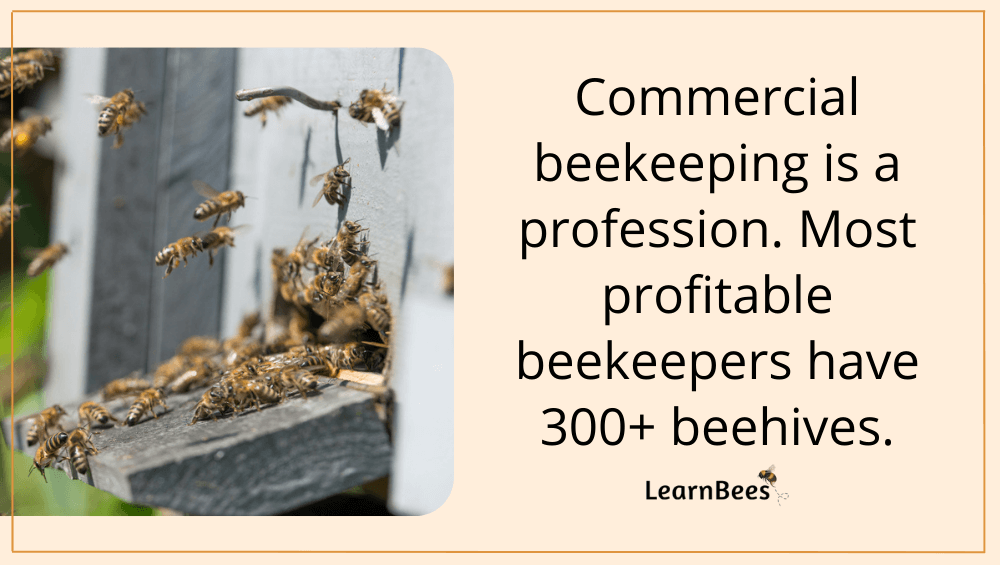
Yes, beekeeping can be considered a profession when done on a large scale. Large-scale beekeeping usually consists of 300+ beehives and working 60-80 hours per week.
In other words, you don’t profit from beekeeping unless you have many beehives to the point that it’s not a hobby.
That’s why we always tell people not to go into beekeeping for the money.
I don’t tell you this to discourage you. I tell you this so you can manage your expectations before investing time and money into beekeeping.
The truth is:
It takes time and effort to become a good beekeeper. You need to read and learn about honeybees before getting started. You should also plant a bee-friendly garden because honeybees rely on flowers for food.
From there, it’s smart to contact local beekeepers who can mentor you and offer support. There is a lot to learn about keeping bees, so the more help you have, the better.
It’s also important to remember:
Starting beekeeping isn’t cheap.
It costs at least $500 to get started with one hive and everything you need. Additionally, most of the money beekeepers make gets reinvested for the bees. So don’t quit your day job to become a beekeeper. You’ll starve out.
But, give it time, learn the hobby, and you can make a little side money in a few years.
FAQs on “What is a Beekeeper Called?”
- What is the name of a beekeeper?
- What is another name for beekeeping?
- Why is a beekeeper called an apiarist?
- Why is it called an apiary?
- What is a beekeeper’s hive called?
- What is the difference between apiary and beehive?
- Is an apiarist a beekeeper?
- What is a bee community called?
- Who collects honey from beehives?
What is the name of a beekeeper? What is honey beekeeping called?
Beekeepers are also known as “apiarists.”
The first known usage of the word “apiary” was in 1654.(4)
The base of the word derives from the Latin word “apis,” meaning “bee.” This eventually led to “apiarium” or “beehouse” and later “apiary.”
With that in mind, people who keep honeybees are most commonly called “beekeepers.” Most beekeepers are hobbyists with between one to five beehives. They have the hobby because they find honeybees fascinating and enjoy harvesting honey and beeswax.
According to the Department of Agriculture, there are approximately 212,000 beekeepers in the United States.(5)
Additionally, it’s estimated that about 32% of beekeepers are female, and 68% are male.(6)
—> Go back to the FAQs on “What is a Beekeeper Called?”
More to Explore:
What is another name for beekeeping?
Beekeeping is also called apiculture.
Apiculture is a technical term that describes the rearing and maintenance of honeybees.
It derives from the Latin word “apis,” which means bee. You’ll notice that many beekeeping terms derive from the word apis. For instance, Apis mellifera is the scientific name for the Western honeybee.
Humans have been practicing apiculture for centuries. In fact, honey collection dates back to Ancient Egyptian and Mayan civilizations.
In the 18th century, scientists started studying bee biology, which led to a better understanding of honeybees and other bee species. Later in the 19th century, apiculture was revolutionized by the invention of the modern beehive.
This modern beehive is called the Langstroth hive, named after its creator, Lorenzo Langstroth. The Langstroth hive is the most commonly used hive today.
—> Go back to the FAQs on “What is a Beekeeper Called?”
More to Explore:
Why is a beekeeper called an apiarist?
The word “apiarist” is derived from the Latin word “apis,” which means bee.
An apiarist is someone who keeps bees and manages hives. Apiarists are also responsible for collecting honey and other bee products like beeswax or propolis.
The hives that a beekeeper manages are kept in an apiary. The word “apiary” is derived from the Latin word “apiarium,” which means beehouse.
—> Go back to the FAQs on “What is a Beekeeper Called?”
More to Explore:
Why is it called an apiary? What is a beekeeper’s farm called?
An apiary is a place where beehives are kept. The word “apiary” is derived from the Latin word “apiarium,” which means beehouse.
An apiary can be as small as a few hives in someone’s backyard or a large commercial operation with hundreds of hives. Beekeepers often keep bees as a hobby.
However, some commercial beekeepers keep bees to rent out to farmers, sell honey, and sell packages of bees. These commercial beekeepers usually have a larger apiary of more than 300 beehives.
—> Go back to the FAQs on “What is a Beekeeper Called?”
More to Explore:
- How Many Bees Are in a Hive?
- What is Backyard Beekeeping?
- Honey Extractors 101: Everything You Need to Know
What is a beekeeper’s hive called?
Beekeepers’ hives are called “beehives.”
Beehives are man-made structures that house a colony of honeybees. There are many different types of beehives, but the most common type is the Langstroth hive.
The Langstroth hive was invented by Lorenzo Langstroth in 1852 and is the most commonly used hive today. It consists of a series of frames that can be added or removed from the hive.
Another type of hive is the top bar hive. Top bar hives are less common than Langstroth hives, but they’re gaining popularity. Top bar hives are more straightforward in design and are easier to build than Langstroth hives.
—> Go back to the FAQs on “What is a Beekeeper Called?”
More to Explore:
What is the difference between apiary and beehive?
An apiary is a place where beehives are kept. The word “apiary” is derived from the Latin word “apiarium,” which means beehouse.
A beehive is a man-made structure that houses a colony of honeybees. Beehives come in many shapes and sizes, but the most common type is the Langstroth hive.
The Langstroth hive was invented by Lorenzo Langstroth in 1852 and is the most commonly used hive today. It consists of a series of frames that can be added or removed during hive inspections.
In a natural environment, honeybees will nest above the ground inside hollow logs or empty tree cavities. In apiaries, beekeepers will house honeybees inside wooden beehives.
The beehive provides a safe environment for the honeybees and makes it easier for the beekeeper to manage the hive and harvest the honey.
—> Go back to the FAQs on “What is a Beekeeper Called?”
More to Explore:
- Queen Cells 101: What They Are & How to Handle Them
- What is Festooning?
- What Are the Langstroth Hive Dimensions?
Is an apiarist a beekeeper?
Yes, an apiarist is a fancy word for a beekeeper.
An apiarist is someone who keeps honeybees. They perform hive inspections, treat for infections, and replace queen honeybees when necessary. Apiarists, also known as beekeepers, also collect bee products like honey, beeswax, and propolis.
Beekeepers also may sell honey to local farmers’ markets. But, most beekeepers perform beekeeping solely as a hobby. They offer honey to their friends and family and enjoy studying honeybees.
—> Go back to the FAQs on “What is a Beekeeper Called?”
More to Explore:
What is a bee community called?
Honeybees live in communities known as “colonies.”
Honeybees live in colonies because they’re social bees. A single honeybee colony can have up to 60,000 honeybees in it. The colony consists of a single queen honeybee, thousands of worker honeybees (females), and usually a few hundred drone honeybees (males).
The queen honeybee is the only bee in the colony that can lay eggs. The worker honeybees are responsible for caring for the queen and her eggs, building and repairing the hive, gathering nectar and pollen, and making honey.
The drone honeybees’ only job is to mate with queens from other hives. Once they’ve mated, they die.
—> Go back to the FAQs on “What is a Beekeeper Called?”
More to Explore:
Who collects honey from beehives?
The beekeeper collects the honey.
They use a hive tool to pry the frames apart and a bee smoker to calm the bees. Then, they collect the frames of honey to be harvested.
Next, the beekeeper extracts the honey from the frames using an extractor. An extractor is a piece of equipment that spins the frames of honey, forcing the honey out of the comb and into a container.
After the honey has been extracted, it’s time to bottle it. The beekeeper will strain the honey to remove any impurities and then pour it into bottles or jars. The honey is then ready to be sold or given away.
